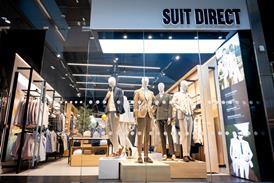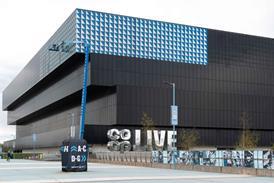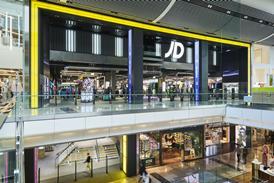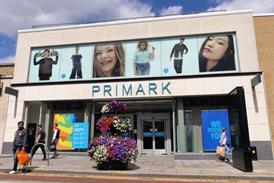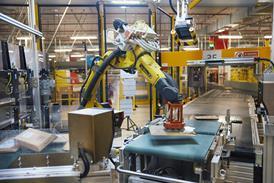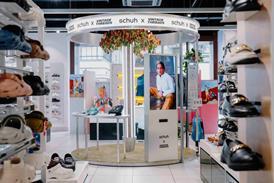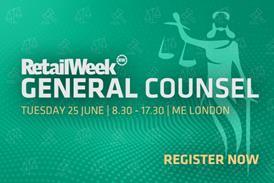-
Home
- Back to parent navigation item
- Home
- JOIN TODAY
- Subscribe now
- News
- Sectors
-
Companies
- Back to parent navigation item
- Companies
- Full A-Z list of retail companies
- ABC
- DEF
- GHI
- JKL
- MNO
- PQR
- STU
- VWX
- YZ
- Abercrombie & Fitch
- Adidas
- Ahold Delhaize
- Aldi
- Alibaba
- Allbeauty
- AllSaints
- Amara
- Amazon
- Ann Summers
- Anthropologie
- AO
- Apple
- Argos
- Asda
- Asos
- B&M
- B&Q
- Bathstore.com
- Beales
- Better Bathrooms
- BHS
- Birchbox
- Blacks
- Blue Inc
- Boden
- The Body Shop
- Boohoo
- Booker
- Booths
- Boots
- Boux Avenue
- BrandAlley
- Bravissimo
- BrightHouse
- Bunnings
- Burberry
- Burton
- Card Factory
- Carpetright
- Carrefour
- Casper
- Cath Kidston
- Charles Tyrwhitt
- Charlotte Tilbury
- Childrensalon
- Claire's
- Clarks
- Clintons
- Coast
- The Co-operative Group
- Crew Clothing
- Currys
- CVS
- Debenhams
- Deliveroo
- DFS
- Dobbies Garden Centres
- Dorothy Perkins
- Dreams
- Dune
- Dunelm
- Eataly
- eBay
- Edinburgh Woollen Mill
- The Entertainer
- Estee Lauder
- Evans Cycles
- Farfetch
- Fat Face
- Feelunique
- Fenwick
- Finery
- Flipkart
- Flying Tiger Copenhagen
- Footasylum
- Fortnum & Mason
- The Fragrance Shop
- Frasers Group
- Furniture Village
- Game
- Gap
- Global Fashion Group
- Glossier
- Go Outdoors
- Green Man Gaming
- Greggs
- Gymshark
- H&M
- Halfords
- Hamleys
- Harrods
- Harvey Nichols
- HMV
- Hobbs
- Hobbycraft
- Holland & Barrett
- Home Bargains
- The Home Depot
- Homebase
- Hotel Chocolat
- Houseology
- House of Fraser
- The Hut Group
- Iceland
- Ikea
- Inditex
- In The Style
- Jack Wills
- Jaeger
- JC Penney
- JD.com
- JD Sports
- Jessops
- Jigsaw
- John Lewis
- Joules
- Jumia
- Just Eat
- Karen Millen
- Kingfisher
- Kroger
- Kurt Geiger
- Lakeland
- Lego
- Levi’s
- Liberty
- Lidl
- LK Bennett
- LloydsPharmacy
- Loaf
- Loblaw
- Lovehoney
- Lowe’s
- Lululemon
- Lush
- LVMH
- Majestic Wine
- Mamas & Papas
- MandM Direct
- Maplin
- Marks & Spencer
- Matalan
- Matchesfashion.com
- Mercadona
- Metro Group
- Mint Velvet
- Missguided
- Miss Selfridge
- Monsoon Accessorize
- Moonpig
- Morleys
- Morrisons
- Moss Bros
- Mothercare
- Mountain Warehouse
- Mulberry
- N Brown
- Naked Wines
- Natura
- New Look
- Next
- Nike
- Nordstrom
- Notonthehighstreet
- Oak Furniture Land
- Oasis Warehouse
- Ocado
- Office
- Office Outlet
- Oliver Bonas
- The Original Factory Shop
- Outdoor and Cycle Concepts
- P&G
- Peacocks
- The Perfume Shop
- Pets at Home
- Pets Pyjamas
- Phase Eight
- Poundland
- Poundworld
- Pret a Manger
- Primark
- Quiz
- QVC
- The Range
- Reiss
- Reliance Retail
- Rent the Runway
- Richer Sounds
- River Island
- Robert Dyas
- Ryman
- Sainsbury's
- Schuh
- Screwfix
- Scs
- Seasalt
- Secret Sales
- Selfridges
- Sephora
- Shoe Zone
- SilkFred
- Simba
- Smyths
- Sofa.com
- Sofology
- Sosandar
- Shein
- Space NK
- Spar
- Sports Direct
- Starbucks
- Store Twenty One
- Studio Retail
- Suning
- Superdrug
- Superdry
- Sweaty Betty
- Tapi Carpets
- Target
- Ted Baker
- Tencent
- Tesco
- TJX
- TK Maxx
- TM Lewin
- Topps Tiles
- Toys R Us
- Trouva
- Unilever
- Uniqlo
- Urban Outfitters
- The Very Group
- Victoria Plum
- Waitrose
- Walgreens Boots Alliance
- Walmart
- Waterstones
- Whistles
- The White Company
- White Stuff
- WHSmith
- Wickes
- WiggleCRC
- Wilko
- WoolOvers
- Woolworths SA
- The Works
- Yoox Net-a-Porter
- Yours Clothing
- Zalando
- Zara
- People
- Intelligence
- Events
- About us
- Subscribe now
- Retail Navigator
Understanding Amazon – how every retailer’s biggest threat operates
By Gemma Goldfingle2019-09-18T05:00:00

If you ask most retail leaders what their biggest threat is, you’ll hear one common answer: Amazon.
It’s no surprise. The online giant racks up $232bn (£185bn) of global sales and accounts for almost half of US and a third of UK ecommerce sales, with strength in diverse categories ranging from books to beauty.
Just like ‘Google’ became a verb, so has Amazon. To be ‘Amazoned’ is to have one’s business crushed by the retailer moving into your category.
But Amazon impacts all retailers. Even in areas where it is not stealing market share, the bar it sets in terms of payment, delivery and customer experience, drives higher customer expectations.
And its devotion to innovation and solving customer problems means that bar is constantly being raised.
In Understanding Amazon, Retail Week delves into:
- Amazon’s strategy
- How Amazon innovates
- Where Amazon’s future growth will come from
- Amazon’s store strategy
Already have an account? Sign in here


